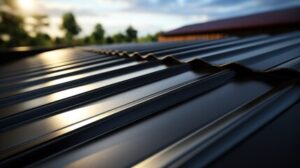Re-roofing is a major home improvement project with practical and aesthetic implications. Proper installation is critical to prevent leaks, mold, and structural damage.

Local building codes and manufacturer guidelines dictate specific installation procedures for different roofing materials. A qualified roofing contractor will adhere to these guidelines, ensuring the longevity and performance of your new roof. Contact Archdale Roofing High Point for professional help.
When a new roof is installed, it turns your home into a construction zone. This means that there is equipment, materials and debris all around. The project can also be very noisy and disruptive. It is best to plan ahead and prepare for the inconvenience and disruption of your daily routine during this time. This will ensure that everyone involved has a successful and safe roofing installation.
A key part of preparation is clearing the work area. This includes moving vehicles, outdoor furniture and other items away from the workspace. This also involves ensuring that gates and walkways are clear so that the crew can safely and easily access the work area. It is also a good idea to cover any sensitive areas of your yard or garden with tarps to protect them from debris. It may also be necessary to have a dumpster delivered for waste disposal, so that it is easily accessible by the crew.
Another important aspect of preparation is making sure that children are kept out of the work area. The noise and mess of a new roof can stimulate the curiosity of children and they should be kept out of harm’s way at all times. It is also a good idea to keep pets out of the area, as they can be spooked by the sounds of hammers and other equipment.
It is also a good idea to check the weather forecast before starting the job. If rain or snow are expected, it is a good idea to ask your roofing contractor about their plans for working in these conditions. In some cases, they may be able to complete the job in stages using tarps and other protective measures.
It is also a good idea to remove any plants that could be affected by the work and trim back overgrown branches or shrubbery. This will allow the crew to work more efficiently and prevent tripping or falling hazards. It is also a good idea to check that all power lines are safe and not in the way of the roofing crew.
Installation
A roof protects a home from rain, snow, and nature’s elements. A professional roofing contractor installs materials like shingles or metal panels to create or replace a roof that will protect the structure and contents of a building. During the installation process, qualified contractors take multiple steps to ensure durability and longevity. The roofers will cover sensitive areas of the yard and house with tarps, arrange for a dumpster to dispose of waste material, and use boards to shield air conditioning units, gardens, or any other objects located near the work zone.
A well-installed roof has proper ventilation to avoid moisture buildup and mold growth. A reputable contractor will install ventilation vents, as well as attic fans and insulation to maximize energy efficiency. The roofers will also properly install the ridge cap, creating a watertight seal at the peak of the roof.
The contractor will then apply the final roofing materials, sealing all seams and edges. They will also install metal drip edge along the eaves and flashing around chimneys, wood stove pipes, skylights, certain vents, and hip roofs. They will also install gutters, using strong fasteners and extending far enough away from the foundation to prevent clogs that can cause water damage.
Inspection
As the roofing installation process proceeds, inspectors are on hand to make sure that the work being done is up to standards and follows the manufacturer’s specifications. They also look for issues that may lead to structural problems and costlier repairs down the road. Inspectors are trained to spot problem areas that need attention, and they can often point out problems that are not visible to the naked eye.
In addition to checking the roof covering, roof decking, and other roof components, an inspector can also examine gutters and downspouts; the interior and exterior of chimneys, skylights, vents, and other penetrations; and the general structure of the building from readily accessible points such as doors, windows, and panels. They can also check for signs of wood-destroying insects such as carpenter ants, termites, old house borers, and Powderpost beetles.
During the inspection, a contractor will clear away any debris from the site and take all necessary safety precautions. This includes securing ladders, wearing protective gear, and taking proper precautions to avoid working on a high ladder without an assistant or inclement weather. The inspector should also make sure that the roof is free of any debris or tripping hazards, and that all workers are using proper lifting techniques and other safety measures when carrying heavy materials up to the roof.
Once the roof is clear, an underlayment of felt paper or synthetic material is placed over the roof decking to create a barrier that protects against water damage. A drip edge is also installed along the edges of the roof to help guide water away from the structure. Once these layers are in place, the roofing contractor will install shingles. Finally, ridge caps and vents are placed as well to complete the roof.
Once the job is completed, an inspector will return to review the work and verify that it meets all local building code requirements. They will also provide documentation of the finished product and offer advice on maintenance and warranty information. This final step is essential to ensuring that the new roof is properly installed and ready for years of use.